Wreck-It Ralph 2 is a Travesty | Film Analysis
- PracticalPisces
- Aug 15, 2022
- 24 min read
Updated: Jan 29, 2023

Ralph breaks the internet, or wrecks it, is conceptually bad and poorly executed film. It has a narrative to tell, and it does not care whether the plot points follow logically. Unlike other late 2010 movies, a change in director cannot be cited as the reason for this film's problems. The writing team seemed to really want Ralph and Vanellope inside the internet, but they could not come up with a good enough reason for them to be in there besides something breaking, how fitting, and them needing to venture into a new digital world to solve the issue.
The movie forgets about the character arcs of the first film, including those that the secondary characters went through, and turns them into the worst possible versions of themselves. Ralph's arc in this movie is to be obsessed with Vanellope's validation and to be willing to do anything to preserve it. So, he must fix the damage he caused by trying to make her as satisfied with life as he is, only for that mission to result in her wanting to leave the arcade for keeps. Vanellope is a cookie cart-racing, teleporting, game-hopping, video game character who wants more out of life despite being the princess (queen/president) of her world, giving her the power to change just about anything she wants, and being one of the most, if not the most, popular characters in the real world. In short, Ralph is clingy and obsessive, and Vanellope is ungrateful and bratty. These are the protagonists of the movie.
The first movie, appropriately, starred Ralph, a "bad guy" who wanted to be "good" so that people would respect him. He did not know how significant his role as the bad guy was until after his dangerous journey. He learned that acting like a good guy was not important but having your heart in the right place is what really matters. This is why he restated the Bad-Anon motto as he descended towards the candy volcano. "I'm bad and that's good. I will never be good and that's not bad. There's no one I rather be than me." Ralph was the one who decided to pull off what would be the most heroic sacrifice in arcade history. It was not a stunt to be treated better, it was out of consideration for someone he cared about, someone he unknowingly wronged, and someone who had been just as wronged as he had been by society. By helping Vanellope accomplish her purpose, Ralph discovered how significant his purpose was. Ralph deserved the cookie medal. He was a hero who used his natural, albeit destructive, abilities for good. Ralph ended the movie realizing that even though he has a villainous role to play for the sake of his game, he is capable of great acts of kindness.
Out of fairness, I must start with problems present in the first movie.
1) It is highly unlikely that most, not even all, of the games Ralph has access to in "Game Central Station" would be connected to the same surge protector. Some of these games, like Sugar Rush, are located across from Fix-It Felix Jr. It would make more sense for Mr. Litwak to plug these games into an alternate outlet instead of jungle vining them across the arcade floor and into one surge protector behind Ralph's game. Also, the maximum power load for most surge protectors (120V) is twelve amps. Arcade cabinets usually operate on around three amps, sometimes more. So, just four games in a single surge protector would push it to its limits. Litwak plugged over twelve arcade games into the main surge protector. That would be around thirty-six amps of power at the least and around fifty-four amps of power at most.
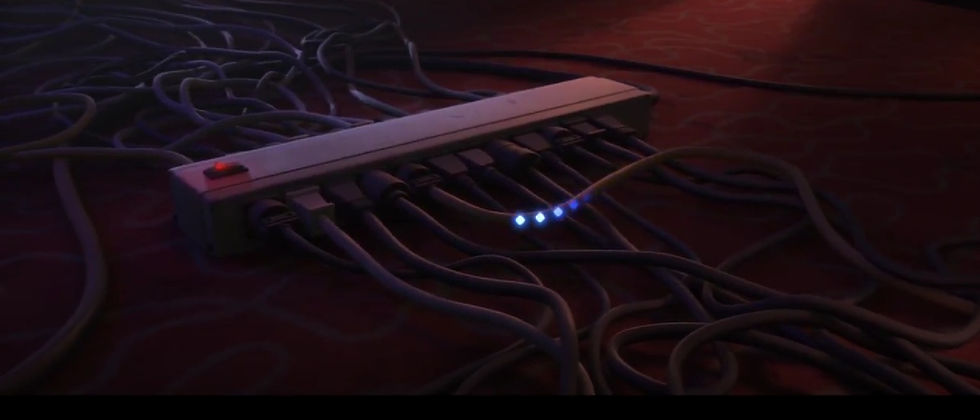
2) When Ralph first meets Vanellope, the former loses his grip on the candy cane tree after grabbing a "double stripe" branch. This prompts Vanellope to mockingly explain what double stripe branches do, seeing through Ralph's ruse. After they "race" for the medal, Ralph is left clinging to a double stripe branch that does not fade away for several seconds. The comedic timing of that particular branch undermines the threat the double-banded branches pose.
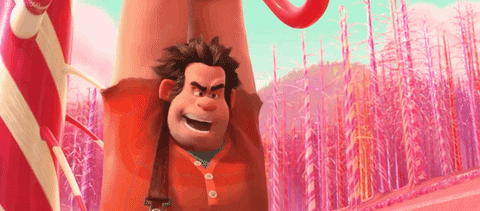
3) Once Ralph catches up to Vanellope, he knocks over several "stadium" boxes and a stand holding an enormous cupcake. Not only does Ralph send the cupcake flying in the perfect trajectory to fall on him, but it also manages to subdue him long enough for Wynnchel and Duncan to capture him. (Ralph does manage to break out of the cupcake without the assistance of the dessert guards, because they planned on releasing him with a hard candy chainsaw, so it is unclear why he could not smash through the cupcake immediately.) While coated in the thick, green melted candy from the bog, Ralph was still able to lift the candy boxes with ease. Cupcakes are not typically hard unless they are stale. Even still, Ralph was strong enough to break a jawbreaker candy with his fists alone. (Also, Ralph weighs 643 pounds, so him falling on the ground with the cupcake on him should have broken it open. Also, what was the purpose of the nine-foot-tall cupcake?) Why the moment of weakness?

4) Ralph's weight of 643 pounds should have some negative consequences for the methods of transportation he uses in the film. To the movie's credit, Calhoun's glider does struggle to ascend once Ralph boards it. However, Ralph sitting on the back of the cookie cart should not only impact its acceleration, but also cause it to tilt upwards.


5) When Felix and Calhoun end up in the Nesquik sand, they are immediately waist-deep in the mixture, preventing the former from jumping. However, Felix is able to remove his hammer, usually stored on his waist, from under the mixture moments later. If the mixture was strong enough to hold Felix in place, he should not have been able to unearth his hammer from it like a child pulling a toy out from a sandbox.
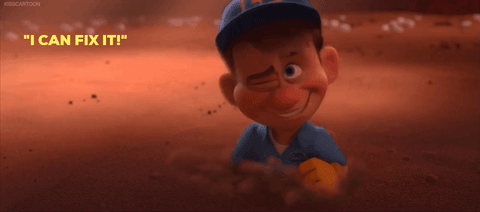
6) Vanellope's glitch-based teleportation is theorized to be a corrupted version of an intended power. It is possible that the glitch bound to her power, allowing it to be recharged faster. However, Vanellope said that "glitches can't leave their game" (we see this during the bug attack) which makes her ability to leave her game after her code was restored questionable. (Also, Ralph says at the end of the film "the players love her glitch and all," so something is still wrong.) Her code is clearly still not functioning at max stability.
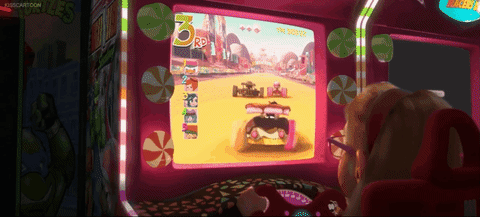
7) "Shut Up and Drive" by Rihanna is definitely not a song that belongs in this film. One Google search answers why. An instrumental anime song with a similar flavor to the Sugar Rush theme song, could have been made instead.
Now for my problems with the second movie:
1) The entire plot could have been prevented at the start of the film. Why did no one suggest manually adding more to Sugar Rush so that Vanellope would stay there? Here is an idea: They could add a ramp that leads the racers over a chasm of sharp, conical candy canes. Also, there could be a cinnamon tunnel that gradually shrinks. There could also be a section where a Ferris wheel-like machine has pieces of chocolate, or brownies, rotating on each arm and the racer has to be careful to adjust their speed accordingly so that they can jump back onto the main track. Felix can help. At the end of the first movie, he rebuilt the finish line. Earlier in that film, he fixed the chocolate bars on the jail window. Also, Ralph managed to make a new track for Vanellope to race on in this movie and it did not take him long to make her one in the previous film. All of these modifications are totally doable! Van is the queen so she can order this be done.

Vanellope's entire arc in the first film was about becoming a racer, what she was meant to be. Now, she is bored of her life because of a lack of thrill? Make some changes, Ms. President.
2) The steering wheel serves as a plot device to get Ralph and Vanellope into the internet. Once they have enough money to buy it, Vanellope wants to live inside of Slaughter Race. The wheel now lacks a purpose. If they buy it, Vanellope leaves. If they do not buy it, Vanellope leaves and the other racers are without a home. It is not like Van cares about the residents of Sugar Rush considering the only person she thought about telling her decision to leave to was Ralph. In the end, all Ralph's efforts did was drive a bigger wedge better him and Van. One that was admittedly caused by her lack of appreciation for being in a position of power, and accomplishing her dream, and will likely result in her death (more on that later).
3) The Ebay listing for the Sugar Rush steering wheel changes from a "Buy It Now or Best Offer" set price to an auction by the time Ralph and Vanellope make it to the item. Additionally, the dollar sign indicating the USD currency is conveniently absent so that the duo can mistake the auction for a game. It does not make sense for Ralph to not know how transactions work since he said that Felix would cover his tab at Tapper's. An auction is not much different from a transaction at a restaurant or a store. The only difference is that the price of an item at an auction is determined by the highest price someone is willing to pay for it granted no one else is willing to pay more. (Ralph knows what arranged marriages are, but not auctions?) Also, the dialogue up until they reached the listing suggested that they knew that they were in a marketplace. (They watched Swati pull up the listing and Litwak say the price.) Also, who bid up from the original set price of $200 USD? All the other person interested in the wheel had to do was buy it at that price. If he was willing to pay seventy-five dollars more, he could have just bought the wheel immediately.
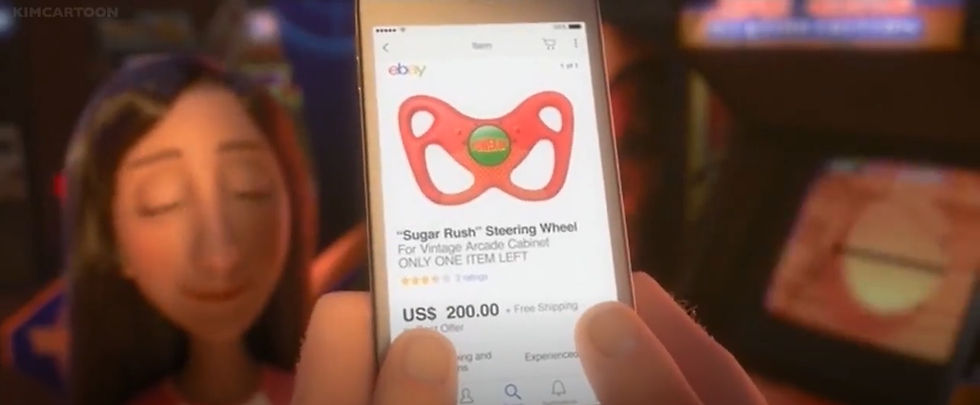
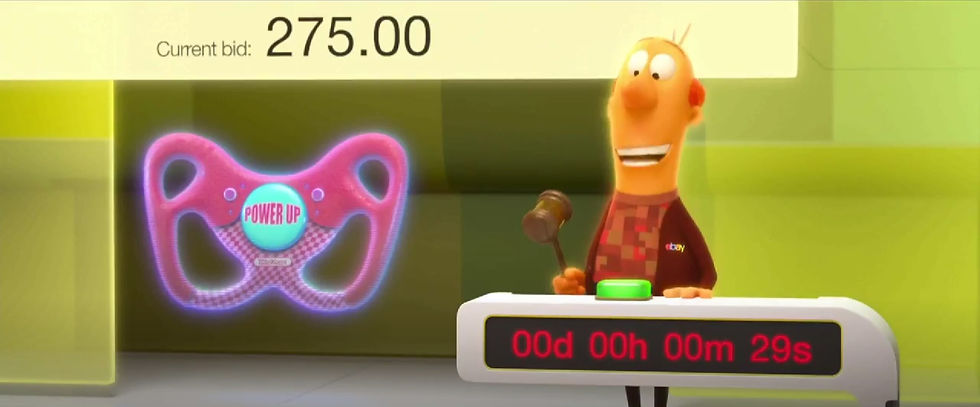

4) There is no way Swati would have had enough strength to break the wheel off of the Sugar Rush cabinet. I have played many arcade racers and know for a fact that those wheels are bolted on pretty well. Also, I am not known for being the gentlest person, especially with games with such high sensitivity like these, and I have never managed to remove a steering wheel from its game. To make matters worse, Mr. Litwak is able to rip the wheel in half while attempting to place it back on. First, he could have called someone with experience with these kinds of games to put the wheel back on. Second, I heavily doubt a man of his years would have the strength to bisect a hard, solid object designed to be gripped firmly. Third, if a teen-aged girl was strong enough to remove the wheel from the cabinet, why would Litwak not assume that attempting to force the wheel back on would cause more damage? If this was a normal thing, one would expect him to have protocols besides risky, brute strength DIY maintenance.
5) Mr. Litwak says that $200 is more than Sugar Rush makes in a year. This makes no sense since the game takes $0.25 to operate and if a single person were to play the game five times, maybe to try different racers, the game would earn $1.25. If that trend continued for a week, granted the arcade has no holiday closures, the game would earn $8.75. If this trend continued for a month, the game would earn $35. If the trend continued for a year, the game would earn $420 (this amount would obviously be much higher considering how much people love this game). Besides the fact that SR does not have to make the money itself to replace the steering wheel, Litwak should be able to afford the wheel easily since he also rents the arcade building, pays the massive electricity bill generated by the many arcade cabinets, and must pay the monthly price for internet access, which is usually around $50 USD. Add in the cost of the Wi-Fi router and Litwak's internet setup is already (likely) over $100. Additionally, if the monthly internet access fee is $50, then the price for connection would be $200 after four months. Also, he likely had to purchase the computer in his office. Decent computers are not known to be cheap. Why does he not have enough money to keep the cabinets working? Getting new arcade cabinets is not a cheap endeavor (Sugar Rush was only around for fifteen years at the start of the first film and Hero's Duty was very new, it even required $2 to work). Each one costs around, or greater than, $500. If Litwak has the cash to buy new games, he should have some cash around to buy a steering wheel, especially after six more years of operation.

6) There were two Sugar Rush arcade cabinets in the first movie. There is only one in this film. The real-world explanation for this would be to allow the story to happen: if there are two cabinets, and one gets removed from the arcade, the residents of SR would continue to exist in the remaining cabinet. However, it still does not make sense that Vanellope, "president" of Sugar Rush for six years, would notice one of the machines housing her world ceasing to function(?) and risk the remaining one by fooling around in the open hours of the arcade. (Also, there was nothing that necessitated Ralph to craft that track immediately, just his friend's boredom, which there were no signs of in that scene. It could have been built after hours and possibly incorporated into the main game. At this point, both Fix-It Felix Jr. and Sugar Rush were at risk of being unplugged.) I am willing to bet that the writers either forgot about the second cabinet or wrote it out to prevent the obvious solution from being available. I smell a dead movie.
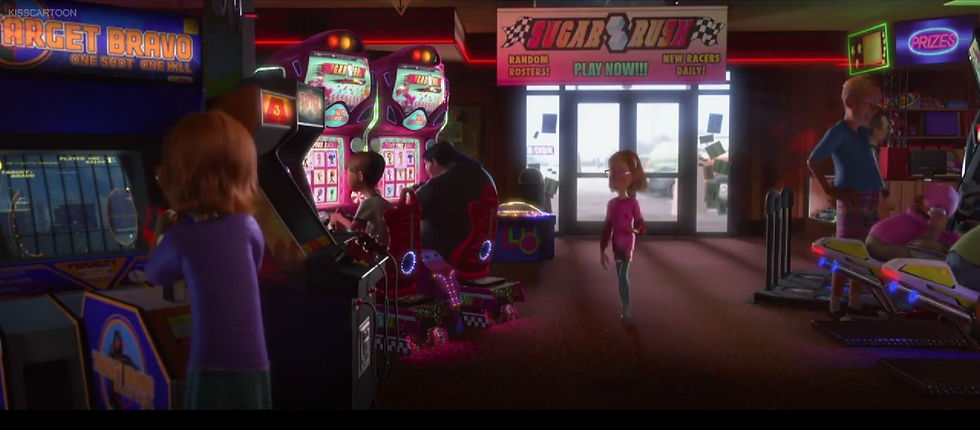
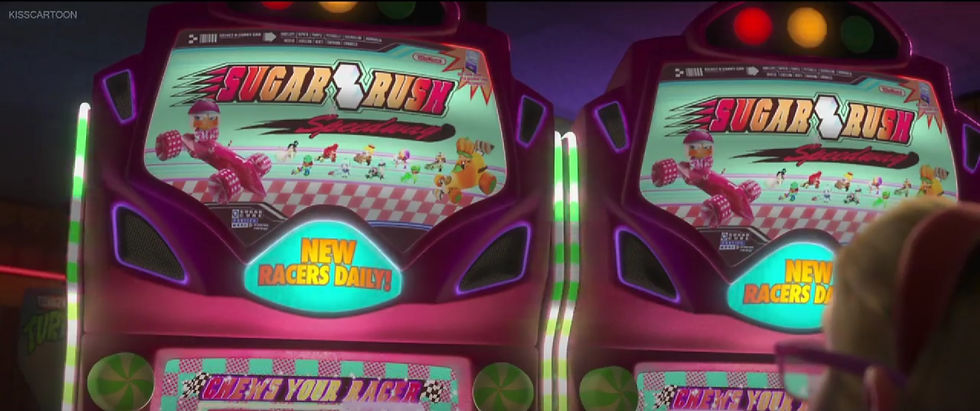
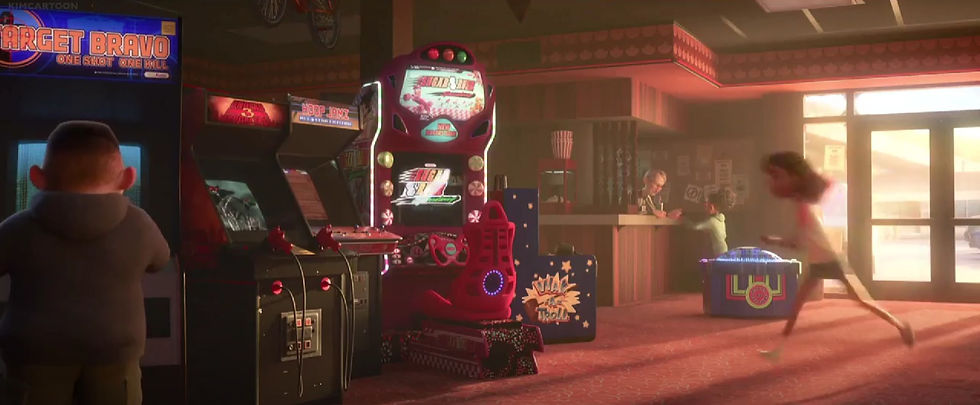
7) Ralph and Vanellope lack knowledge of how real-world purchases work. "We're video game characters, Ralph. We don't have mullah." Realistically, they would have had to hack into Litwak's bank account, find the credit/debit card information, enter the information into Ebay, and force the purchase. Otherwise, if Ralph "purchased" the wheel without providing some virtual currency (which requires an account on another website) equivalent to physical money, and sent it to Litwak's Arcade, he could get the latter in serious legal trouble for fraud. For Ralph to have access to any funds, he would need to have a bank account of his own (obviously impractical and farfetched) or access to a human's. Otherwise, he paid for the steering wheel with plot points. With that said, why did the duo not just find a way into Litwak's computer, where his banking information would be stored if he decides to shop online?
8) BuzzzTube makes no sense. The movie does not provide a conversion rate for the hearts, so using the last number we see before Yesss is introduced, rounded down (1,300,000), each BZT heart would be worth around $0.000033 (one-thirty-thousandth of a cent). With that in mind, Ralph would need around eight-hundred-million hearts to earn enough money to afford the steering wheel. Also, no video-sharing website would pay its content creators based on likes (not everyone who sees a video will like it and not everyone who likes a video will remember to "heart" it). Modern video sites, such as YouTube (which exists in this movie), pay their creators with advertisement revenue based on view counts. Also, the money that Ralph arbitrarily garnered would need to be stored in a bank account.
9) Why were Ralph and Vanellope stupid enough to go into the infected area of Tron? There was a clear sign indicating that a particular part of the game was infected. All they had to do was steer clear of that spot. Also, how did they get out of the game? (An easy solution for this problem would be for Vanellope to teleport to the uninfected area of Tron, then teleport to Ralph, then teleport both of them out of the infected area. The movie does not make it clear what strategy they used to get out.) A reset would count as a "death" since their code is foreign to this game. Why was the game not inspected soon after the virus was found? Normally, Litwak marks games for check-ups the second an error occurs. Later on, Ralph says "back home, me and the kid used to goof off in this game called 'Tron,' but then it got a virus that made the motorbikes go slow and Vanellope stopped wanting to hang out there," except it did not. Their progress was halted by a crash into an invisible wall. These two plot points do not connect. Also, the virus distributing Vanellope's pixel spasms around Slaughter Race implies that if Vanellope so much as touches a building while glitching she will cause the world to faze in and out, acting as a virus herself. Her inclusion in SR would inevitably result in her disposal, thus death.

10) Felix says that he will cover for Ralph when the latter goes into the internet, despite the fact that when he tried that in the first movie, his game almost got unplugged. What is he talking about?
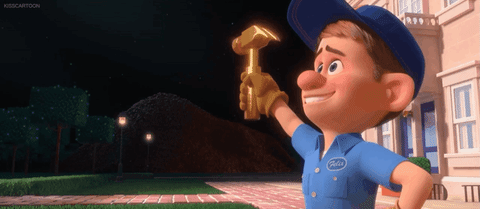
11) Ralph's arc in this film does not follow his progression from the previous film. Besides the fact that the first movie established that Fix-it Felix Jr. is thirty years old, there was even a party celebrating its anniversary, and the twenty-seven-year progression to the events of this film comes from nowhere (why 27 years? Just use thirty), Ralph gets the events of the first film wrong. At the end of Wreck-It Ralph, the Nicelanders began treating him fairly, Felix is his friend (he even chose him to be the best man at his wedding), he is friends with Q*bert and pals, he lives in a shack instead of pile of bricks, and he said that the best part of his day is being raised high enough to see Vanellope racing and the players loving every second of it. In Wreck-It Ralph 2, Ralph says that he wishes that he did not have to go to work ("The only thing I might do different in that scenario would be not having to go to work.")
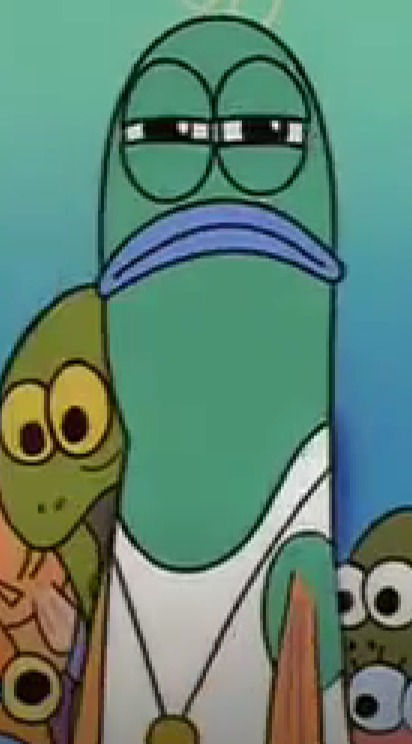
He also clearly has the support and admiration of the Bad-anon group members (he even joined Zangief's book club at the end). He concluded the first film with the message "if that little kid likes me, how bad can I be?" This line refers to his role in his game being villainous (your milage may vary), yet his actual character being the opposite. His role in Vanellope's success story is an example of his true nature. Ralph is not dependent on Van to feel good. Ralph is so out of character and ungrateful for what he gained in the first movie that he even says, "as long as (Vanellope) likes me, I don't need anyone else." Face meet palm. To summarize, Ralph has the support of everyone in his game, Sonic the Hedgehog, the Bad-Anon members, Vanellope, and Sgt. Calhoun. At the end of the film, Ralph says that "we got this new thing every Friday where we hang out in a different game," which is something he would already do every day after hours. The only thing that changed was Vanellope's presence. This is by no means "new."
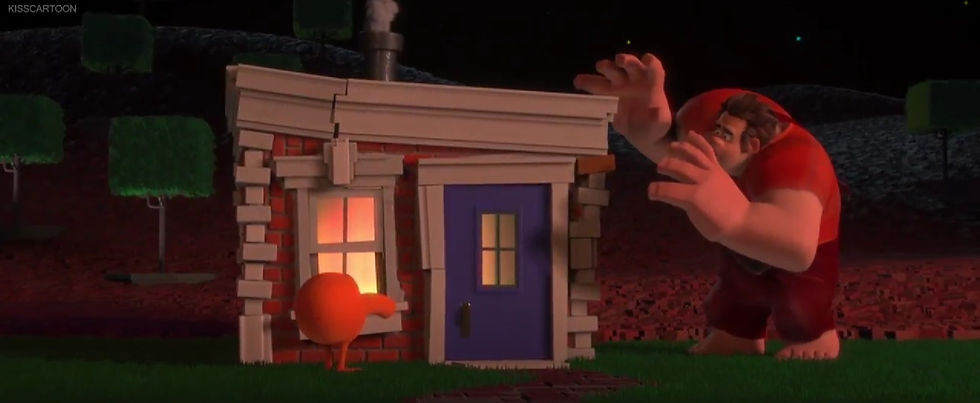
12) Why does Ralph still live in the brick pile in this movie? Narrative wise, it makes sense for him and Vanellope to be on top of the Niceland apartment building to see Sugar Rush for a dramatic scene, but it makes no sense continuity wise. Even if the shack was not up to code, Felix could fix it at any convenient opportunity.
13) Vanellope is a character in this movie. She changes her motivations on a dime. She, a kid, questions whether there is more to life than what she does every day, as an allusion to her boredom with her routine, then ditches her racing duty to drive around on a track that Ralph made (remember when he left his game in the first movie?) all while she was aware that a player had control of her. Vanellope is a great leader. As a result, she causes Swati to break the steering wheel while attempting to pull her back on course. This whole story is her fault. Afterwards, she becomes sad that her game might be unplugged indefinitely and that she will be homeless. She even tells Ralph, "but, I loved my game...that doesn't mean I didn't love it...I mean sure it was kind of predictable, but still I never really knew what would happen in a race," so she really wants to get back home. Until they reach the internet. There was a word for video game characters who left their games to star in others (Q*bert and pals were homeless and could be repaired by Felix's hammer) and it can definitely be applied to Van. This movie really hopes that you forgot about the first one. After Ralph acquires enough money to buy the steering wheel, Vanellope develops her "I want" song and eventually says "I know I should go, but home feels so slow."
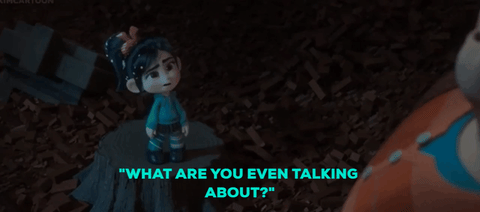
Again, she is the president. She lives in a candy-coated castle. She has everything and everyone at her beck and call. She is the fastest racer with the (probably) the best power up in the game. Why is she unhappy? If you are unsatisfied with being the fastest racer, upgrade everyone else's cars. If you find every obstacle predictable, make new ones. It is not difficult.
14) Ralph and Vanellope entered the internet when it was broad daylight outside. It was 10:17 in the morning when Litwak set up the internet connection. Fix-It Felix Jr. should be doomed. The duo were in the internet for over twenty-three-and-a-half hours! They had twenty-four hours to make money after they left Ebay, then they spent a collective sixteen hours in Spamley's warehouse and Slaughter Race, and they had eight hours left to buy the wheel after leaving the game. Finally, Ralph bought the wheel with thirty minutes remaining.
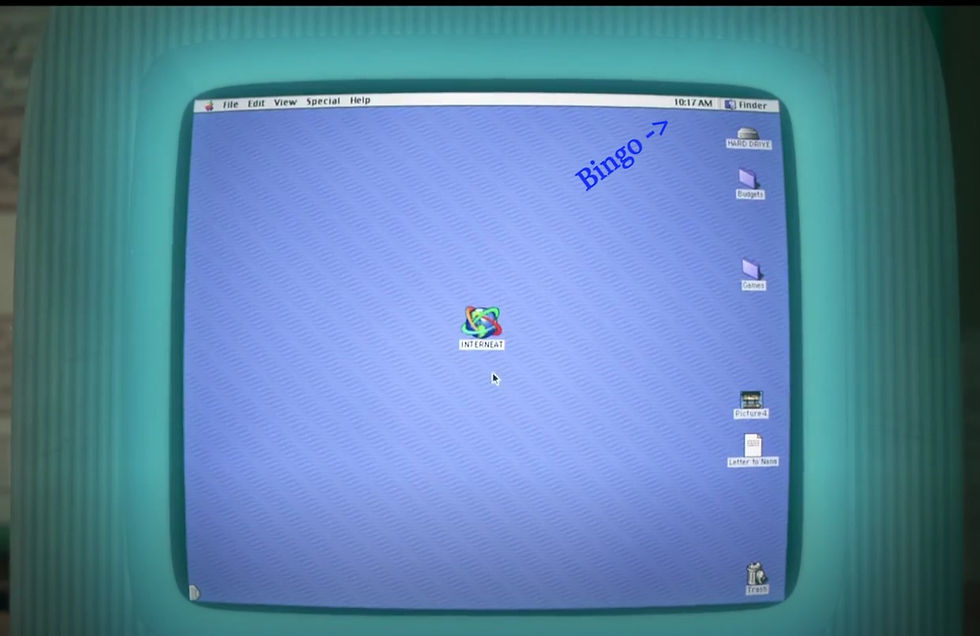
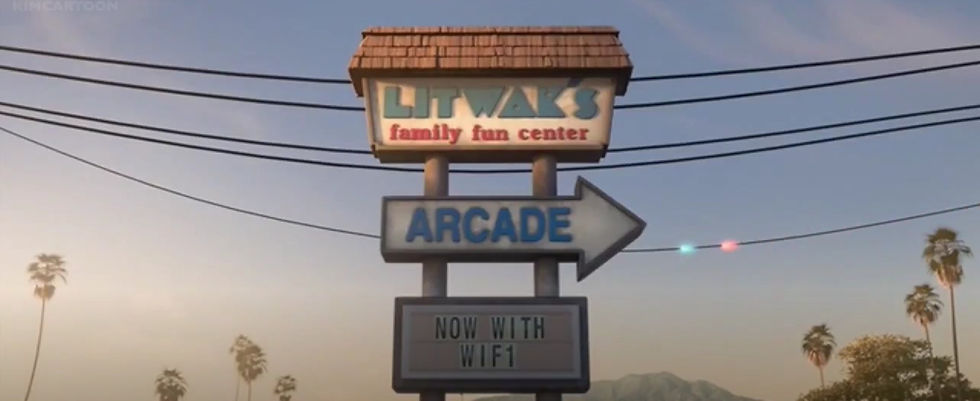
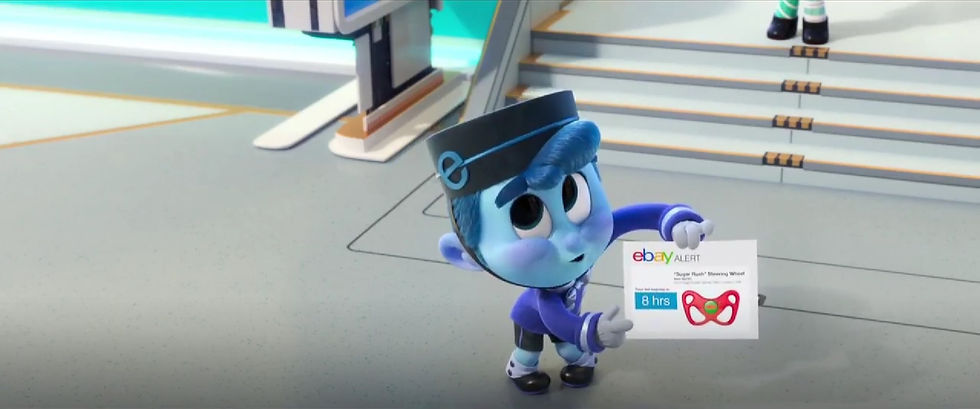
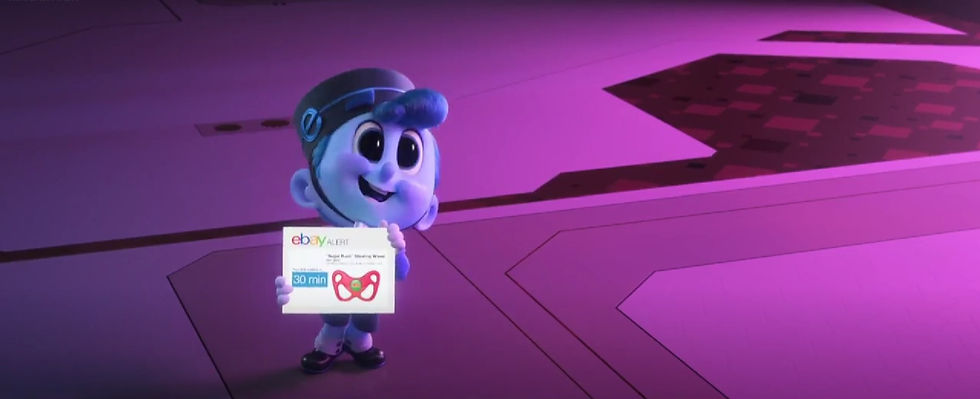
15) The plan to take Shank's car makes little sense. Okay, so they go into Slaughter Race and take Shank's car out of the game, then they bring it to Spamley's website (warehouse) where the latter will contact the buyer. The problem comes in when one remembers that in order for the car to have any value, it must remain in the game. The implication is that the buyer has an account on the SR website and wants the car for his character. So, Ralph and Vanellope would need the character's location in the game for the delivery (missions in the game are even based off this method). Also, them taking Shank's car would not have worked since neither of them have a bank account to accept the money that the buyer had. A better idea would have been to borrow Shank's car, get the (in-game) location of the buyer, and tell Shank to just steal it back after the transaction. It is not like she would not do that anyways.
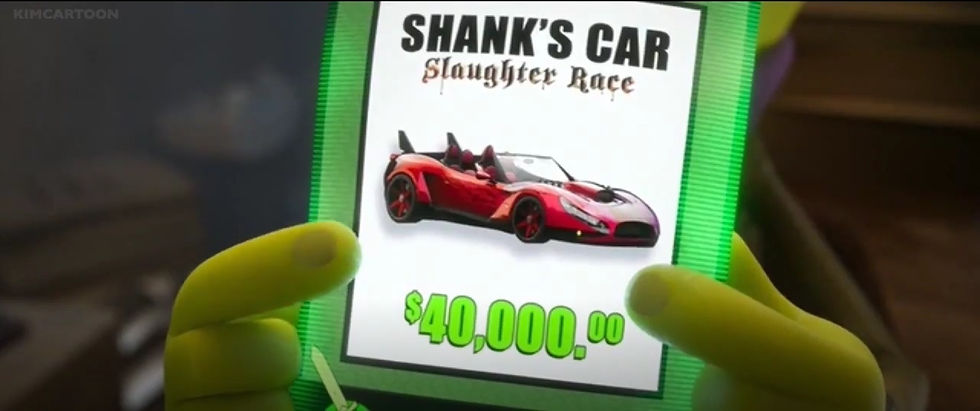
16) Shank says that a game being predictable would not be fun, yet her only role in her own game is to stop players from getting away with cars.

(Why does she not want to leave Slaughter Race? Perhaps she would find it more fun in Sugar Rush. Also, if you want your game to be more challenging, how about giving the players a head start? If you kill them immediately after they find your car, you are a hinderance, not a challenge.) Meanwhile, all of the racers in Vanellope's game are her age, or around it, and she runs the queendom in the arcade after hours. She controls what the game looks like and how life is conducted. She IS Sugar Rush. The movie has no point. Additionally, Shank does not acknowledge the fact that Vanellope could die until the virus takes over Slaughter Race. If she forgets about her teleportation power at any moment (and she does), she could cease to exist. Also, after the virus distributes Vanellope's glitch throughout SR, Spamley says "it must have found something really unstable in there." Besides the fact that Van's glitching would catch players' eyes as a clear issue with the game, her sudden (unintentional) addition to the game would definitely get the attention of the game developers who would then delete her code and destroy her forever. (Van's glitch is not removed at the end of the film.) Also, Vanellope is a copyrighted character and one coded to be a child (one who should fear just about everything in the game) so she would be swiftly removed for controversial reasons as well.
17) Shank in general. She, an adult, encourages Vanellope to tell Ralph about her plan to stay in Slaughter Race instead of encouraging her to leave because what happens in her game is not suitable for children. What the players say should not be heard by her ears. When Ralph said, "let's just find Shank's car and get out of here," Vanellope agreed immediately. (She is a kid who likes vomit and doody jokes. Why on earth would anything about Slaughter Race appeal to her? When Ralph went into Hero's Duty, he panicked and asked, "when did video games get so violent and scary?" That game was younger than both Fix-It Felix Jr. and Sugar Rush. Everything coded in the latter is designed to be kid-friendly. Adult games should shock her to her core.) The movie decides to have Vanellope act like a child based on when it suits the narrative.

Shank understands what viral video websites are. She should have a concept of what is appropriate for children. Ralph knew how to behave around kids, despite the fact that none existed in his game, and everyone feared him, so why does Shank not? She even says, "I'm not going to tell you what to do kid. It's your call." How am I supposed to buy that Van is in good hands with Shank watching her back if the latter just leaves big decisions up to her? When Felix and Calhoun said that the best way to parent is to validate everything a child does, I did not expect all of the adult characters to adopt this mindset. Bad role models lead to poor character in those who look up to them. The last thing slaughter race needs is a child character. They were noticeably absent from the game, like GTA, before Vanellope showed up and for good reason. She could die if one thing goes wrong (in fact, she nearly did before Ralph took her out of the game).
18) Vanellope conveniently forgets that she can teleport through structures to advance the plot. The most annoying example of this is after she fazes through the burning underpass to evade Shank, she floors the brake to avoid colliding with the bus Shank's crew drove in front of the exit. If she remembered her ability, the mission would have been successful, and the rest of the movie would be impossible.

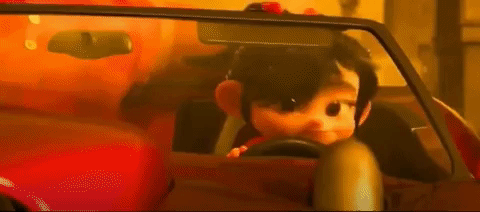
19) The Princess Scene makes no sense. First, Ralph was responsible for Vanellope's success. Just rewatch the first movie. Second, if it was not for Flynn (Eugene) Rider, Rapunzel would have never gained the confidence to leave her castle and discover that she was the lost princess (also, Rapunzel never acted the way she does in this film in her own film). Third, the joke about Merida not speaking English does not work since the majority of the princesses come from different parts of Europe. The rest come from North American (Indigenous), Polynesia, East Asia, or West Asia. The only one who for certain would know English is Tiana since she is a creole woman from Louisiana. Being from Pixar does not mean Merida should not understand English. Especially since the animation style for Tangled, Frozen, and Moana is rather similar to Pixar's. Additionally, Anna and Elsa saying that they do not have a mother is technically wrong since their mother was present in both the first film and its sequel. Their mom perished at sea while they were young, so are they not princesses now? Also, the hero of Frozen was Anna, not a "big, strong man." The "act of true love" was done by her. The villain was done away with by her. Are they still princesses?

Now to condense everything. This movie is basically the first Wreck-It Ralph but with the internet filling in for Game Central Station and Slaughter Race filling in for Sugar Rush. Vanellope wants more out of life, so she ditches her responsibilities while the arcade is open. As a result, her game breaks. Now, she and Ralph are on a time crunch to save Sugar Rush. While outside of their games, Ralph and Vanellope enter a racing game that they both initially despise. Shortly, after arriving, Vanellope develops a plan to steal an item possessed by another character. The duo is then chased down by said character and then they reach a compromise to get what they both want. After leaving Slaughter Race, Vanellope questions her motives and eventually returns to the game, bonding with a powerful adult character (the inverse of events from the first movie, but the scenarios are still similar). As a result of Vanellope's presence in the game, SR briefly goes offline due to a glitch-based virus (like the cy-bug Ralph accidently brought into Sugar Rush). Ralph and Vanellope have a falling out that involves the cookie medal (him introducing the virus is similar to him destroying the cookie cart because both actions broke Vanellope's heart). Ralph must save Vanellope from another virus (like the cy-bugs), and as a result, he falls from a great height and must be saved by other princesses. The movie even attempts to have an emotional ending, despite the fact that Vanellope does not have to leave and leaving makes her a huge jerk because now her people have no one to lead them and all of her new friends will miss her. Finally, Ralph and Vanellope make plans to visit each other when they are not busy.
Vanellope is very unlikeable in this film. She was endearing in the first film from her introduction (your milage may vary). We quickly learn that she is a down-on-her-luck child who is bullied by everyone for being different. She was confined to her game because her code was unknowingly tampered with. All she wanted to do was prove that she was a racer. You were able to empathize with her. And when she becomes who she was meant to be and turns her "disability" into a power, it was pleasant to behold. Not only does she not have to live in the dangerous volcano any longer, but she is also a princess and the rightful ruler of her game. Everything she could ever want is now at her fingertips. But in "Breaks the Internet," she wonders if there is more than what she gained. This is called being ungrateful. Remember when Vanellope was excited to just have an official vehicle to call her own? I do. She is at her most hateable when she says "please, I'm one of sixteen racers, they'd never miss me." So, she is expendable now? This is a statement that disagrees with the movie itself. Earlier in the film, Swati said "yeah, the glitch! I love her!" So, clearly there would be many people unhappy with Vanellope's absence. The game would likely bring in less money as a consequence. Also, Vanellope's compatriots were more than happy to bring her with them to hang out near the end of the first movie. They have had six years to bond. Why are they not eager to hang in this film? (Why is Taffyta antagonistic to Vanellope again? Even if it is in her character to be a prick, which the end of the film contradicts, she was clearly cool with Van at the end of the first movie, so she has no reason to act without sportsmanship.) There are so many issues with Vanellope's argument, but I will not drive the point into the ground.
I really dislike Slaughter Race. Why would Vanellope want to leave her colorful candy world for a smoggy town that looks like it is perpetually engulfed in radiation caused by nuclear fallout?
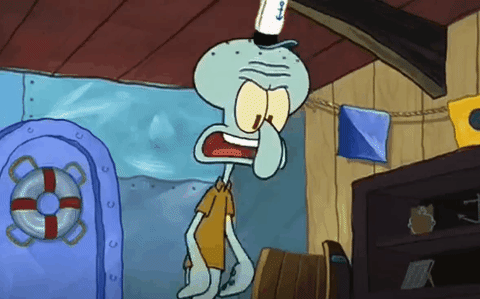
It makes no sense. Especially when she was just as creeped out as Ralph when the sewer shark ate the pit bull. Also, the movie takes crazy liberties with Vanellope's driving abilities. Shank's car is big enough to accommodate Ralph, which means that it is too large for Vanellope's feet to reach the pedals. In Wreck-It Ralph, neither Ralph nor Felix could fit in the cookie cart. Also, Vanellope is used to driving race cars which are designed differently than street automobiles. They differ in size, weight, and height. Cars fit for her, and the other Sugar Rush characters, are smaller, lighter, and closer to the ground than anything in Slaughter Race. Vanellope does not belong in this game.
How on earth did Shank add Vanellope's code to the game? The only elements coded into the game are those the development team has allowed up until this point. The only way a character within the game would be able to "add" anything to it would be to undo something, like Turbo, which would result in a bug. There should be some in-game consequence for hacking into the files. Vanellope's condition was the result of Turbo adding himself to the game. Another character, or a set piece, would be corrupted in the end. Also, again, Vanellope glitching for any reason would make her appear to be a virus since she was a recent, unintentional addition to the game. The only way this ends, logically, is in her death. Do the writers of this film not believe that game forums and Discord exist? The second the developers see Vanellope's "code" in the game, they will remove her to return the difficulty to its former setting(s) and to destroy the controversy. It is not that hard to do research.
Felix and Calhoun's offscreen subplot only serves to replace Vanellope's influence. They somehow made all of the Sugar Rush racers develop sportsmanship, despite the fact that after their memories were restored, they all were cool with Vanellope and eager to hang out as a group (and before then they united twice to prevent her from racing), so it makes no sense for them to lack knowledge of teamwork and sportsmanship. This duo was wasted in this film. How did they perform their gaming duties while also raising the Sugar Rush characters? Where is that story?!
The message of this film falls flat. It is supposed to be "if your friend wants to partake in something that separates them from you, you should support them and trust that they will make time for you." However, if your friend wants to do something unreasonable and irresponsible, you must not encourage nor respect that. It is your job as the best friend to remind them what is best for them and to push them in that direction. If they decide to be illogical anyways, all you must do is accept their decision. Do not be clingy or condescending. Ralph had a point when he said, "you're not exactly innocent here. You were going to ditch everybody and abandon Sugar Rush." Just because you immediately switched back to Ralph being needy does not mean that Vanellope is in the right, movie. This setting is not best for this message. Vanellope needs to appreciate everything she has. That is a good message.
Vanellope going Turbo undermines the theme of the first film. A hero obsessed with being the star can become a villain under the right conditions and a villain can become a hero if he, or she, wants it enough. Vanellope is the villain of this film, and she is unaware of this because the movie treats her as in the right for wanting more out of life, despite the Bad-anon members agreeing that "wanting more" instead of appreciating what you were made to do and who you are is a terrible thing ("...but we can't change who we are. The sooner you accept that, the better off your game and your life will be" - Clyde). Your actions determine whether you are a terrible person or not, not your job. As a video game character, you have a grand role to play in the lives of others, both in-universe and outside of it, and you cannot just quit when it gets hard. Make the best of it. Vanellope is anything but a hero in this film.
The aspects of this film that I like are Maurice LaMarche, "Brain" from Animaniacs, returning to play Tapper and Alfred Molina (Dr. Otto Octavius) guest starring as Double Dan. Their performances were excellent. Also, when KnowsMore (Alan Tudyk) said that getting all of the virus Ralphs to go to therapy would be unrealistic, that got a laugh out of me. Besides that, this film is an out-of-touch cash grab disaster.
You would think that people writing a movie about video games and internet culture would understand how they work. What a shame.




_edited.jpg)




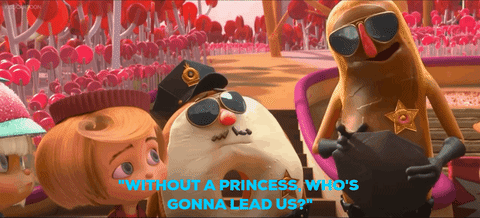
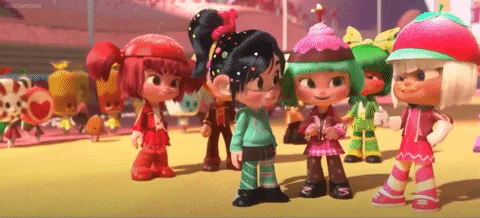
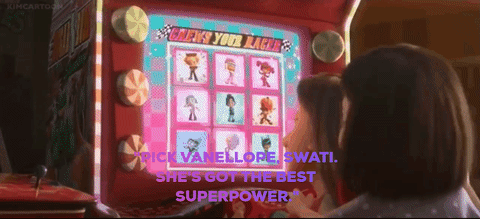


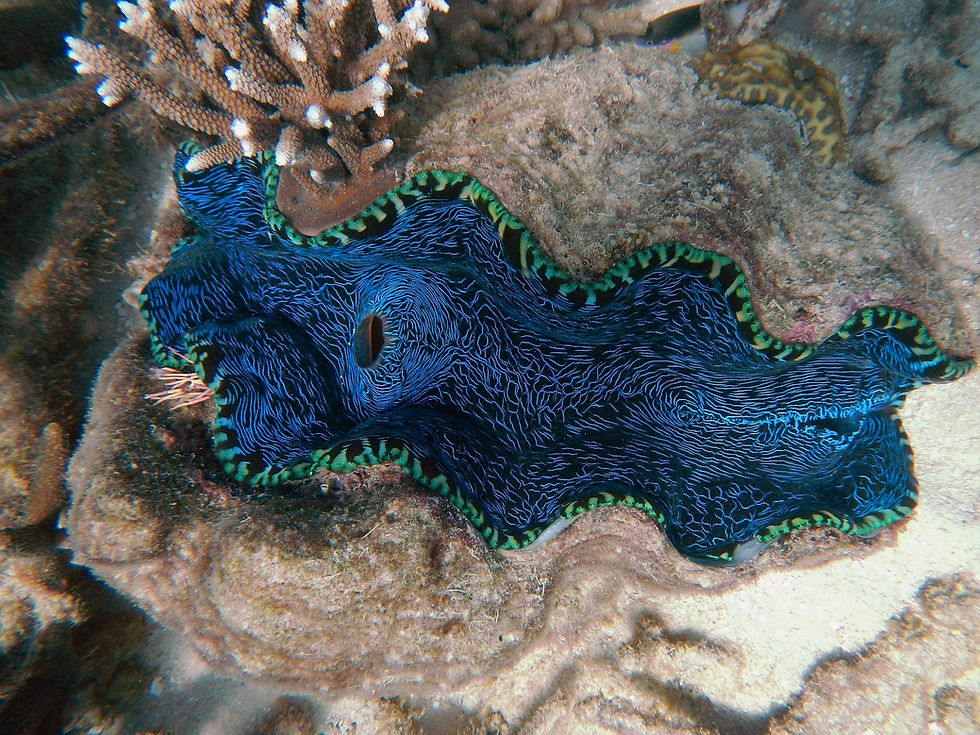
Comments